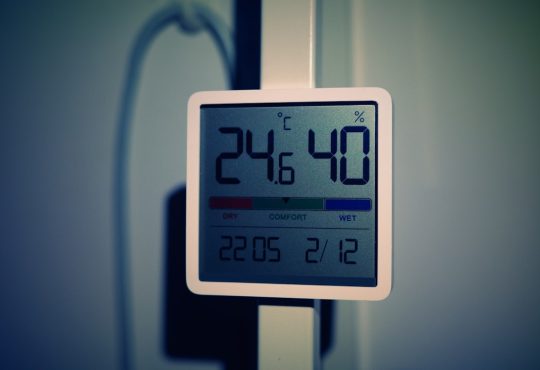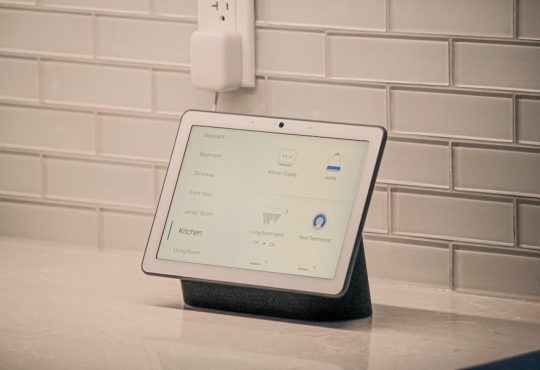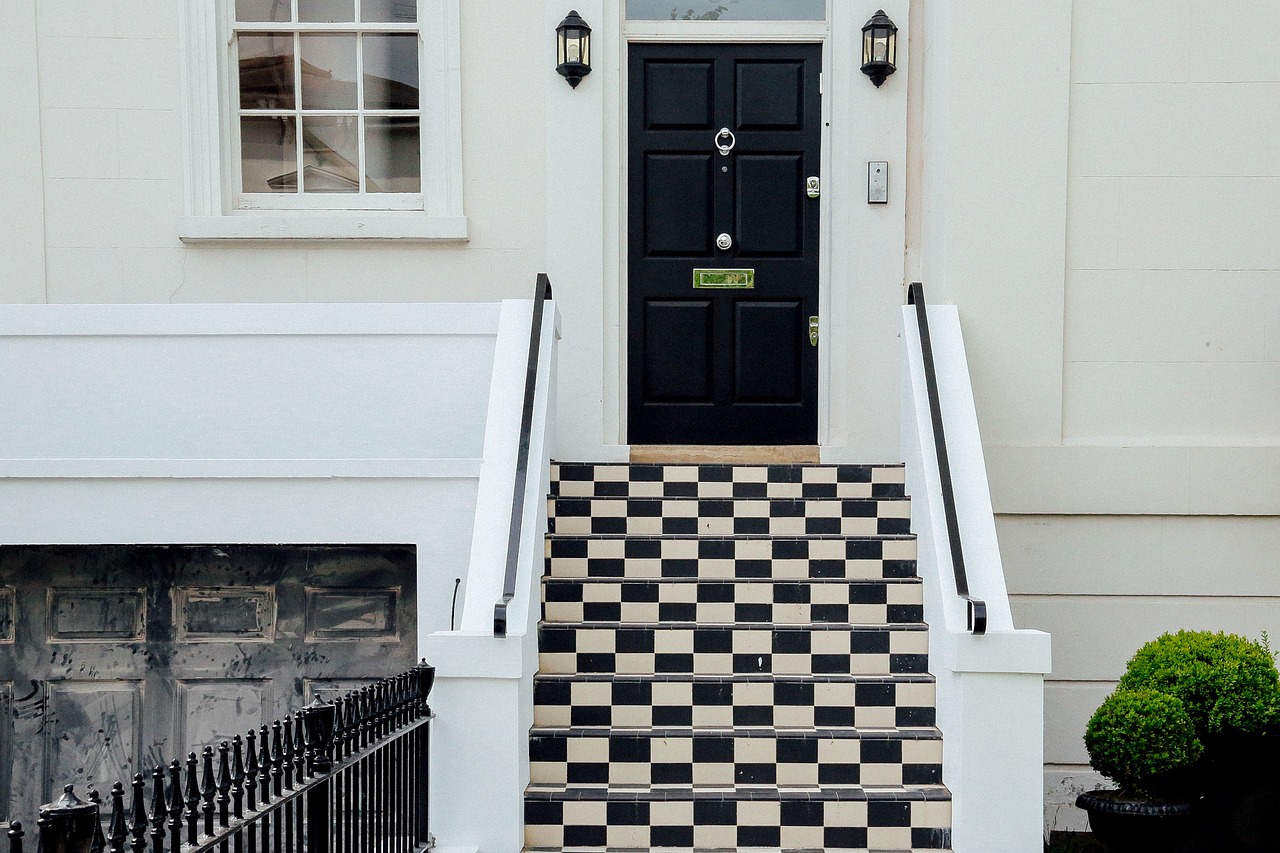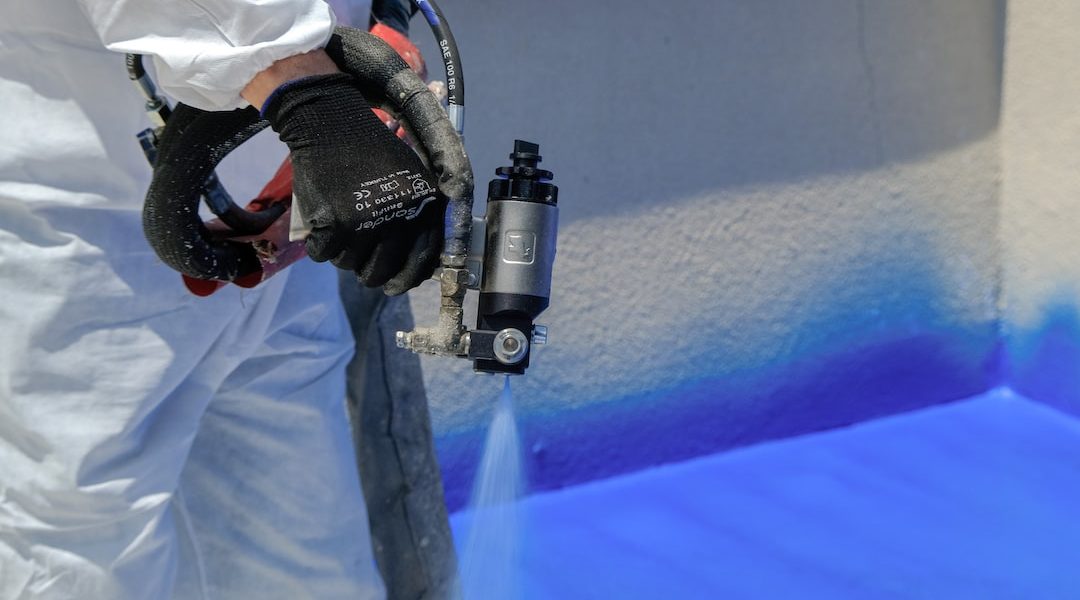
Green Insulation Techniques for a Warmer, More Efficient Home
Green insulation refers to the use of eco-friendly materials and techniques to insulate homes and buildings. It is an important aspect of sustainable living as it helps reduce energy consumption, improve indoor air quality, and minimize the carbon footprint. Traditional insulation materials often contain harmful chemicals and have a negative impact on the environment. Green insulation, on the other hand, utilizes materials that are renewable, recyclable, and non-toxic.
Using eco-friendly insulation materials is crucial for several reasons. Firstly, it helps reduce energy consumption and lower utility bills. Proper insulation prevents heat loss in the winter and heat gain in the summer, making homes more energy-efficient. This not only saves money but also reduces reliance on fossil fuels and decreases greenhouse gas emissions. Secondly, green insulation materials are non-toxic and do not release harmful chemicals into the air. This improves indoor air quality and reduces the risk of respiratory problems and allergies. Lastly, using sustainable insulation materials helps protect the environment by reducing waste and minimizing the extraction of natural resources.
Key Takeaways
- Green insulation techniques can help reduce energy consumption and environmental impact.
- Benefits of green insulation include improved indoor air quality, noise reduction, and increased comfort.
- Understanding the environmental impact of insulation materials is important when choosing the right one for your home.
- DIY insulation installation can save money, but professional installation may ensure better results.
- Green insulation techniques for attics, roofs, walls, and floors can vary and should be chosen based on your home’s specific needs.
Benefits of Green Insulation for Your Home
One of the main benefits of green insulation is improved energy efficiency and cost savings. By properly insulating your home, you can reduce heat loss in the winter and heat gain in the summer. This means that your heating and cooling systems will not have to work as hard to maintain a comfortable temperature, resulting in lower energy bills. In fact, studies have shown that homes with proper insulation can save up to 20% on heating and cooling costs.
Another benefit of green insulation is improved indoor air quality. Traditional insulation materials such as fiberglass can release harmful chemicals into the air, leading to respiratory problems and allergies. Eco-friendly insulation materials, on the other hand, are non-toxic and do not release any harmful substances. This ensures that the air inside your home is clean and healthy to breathe.
Green insulation also helps reduce your carbon footprint. By using sustainable materials and techniques, you are minimizing the impact on the environment. Traditional insulation materials often contain harmful chemicals and are not biodegradable. They also require a significant amount of energy to produce. Eco-friendly insulation materials, on the other hand, are made from renewable resources and can be recycled at the end of their life cycle. This reduces waste and conserves natural resources.
Understanding Insulation Materials and Their Environmental Impact
There are several types of insulation materials available, each with its own environmental impact. Traditional insulation materials include fiberglass, mineral wool, and polystyrene foam. These materials are effective at insulating but have a negative impact on the environment.
Fiberglass is made from glass fibers that are spun into a wool-like material. It is commonly used in residential and commercial buildings due to its affordability and effectiveness. However, fiberglass production requires a significant amount of energy and releases harmful chemicals into the air. It is also not biodegradable and can cause respiratory problems if not installed properly.
Mineral wool, also known as rock wool or slag wool, is made from molten rock or industrial waste products. It is commonly used in high-temperature applications such as fireproofing and soundproofing. While mineral wool is effective at insulating, it has a high carbon footprint due to the energy-intensive manufacturing process.
Polystyrene foam, commonly known as Styrofoam, is a popular insulation material due to its lightweight and thermal resistance properties. However, it is made from petroleum-based chemicals and is not biodegradable. Polystyrene foam also releases toxic gases when burned.
Eco-friendly insulation materials offer a more sustainable alternative. These include materials such as cellulose, sheep’s wool, cotton, and recycled denim. Cellulose insulation is made from recycled paper products and treated with non-toxic chemicals to make it fire-resistant. Sheep’s wool is a natural and renewable material that is effective at insulating and has a low carbon footprint. Cotton insulation is made from recycled denim and is free from harmful chemicals. Recycled denim insulation is made from old jeans and is an excellent choice for those looking for a sustainable option.
Choosing the Right Insulation Material for Your Home
| Insulation Material | R-Value per inch | Cost per square foot | Environmental Impact |
|---|---|---|---|
| Fiberglass | 2.2 – 2.7 | 0.30 – 0.70 | Can be made from recycled materials, but not biodegradable |
| Cellulose | 3.2 – 3.8 | 0.50 – 1.00 | Can be made from recycled materials, but requires energy to manufacture |
| Spray Foam | 3.5 – 6.5 | 1.00 – 2.50 | Can be made from renewable resources, but can release harmful chemicals during installation |
| Rigid Foam | 4.0 – 7.0 | 0.75 – 1.50 | Can be made from recycled materials, but not biodegradable |
When choosing insulation materials for your home, there are several factors to consider. Firstly, you need to determine the R-value, which measures the material’s thermal resistance. The higher the R-value, the better the insulation. The R-value required will depend on your climate zone and the desired level of insulation.
Another factor to consider is the environmental impact of the insulation material. Traditional insulation materials often have a high carbon footprint and release harmful chemicals into the air. Eco-friendly insulation materials, on the other hand, are made from renewable resources and can be recycled at the end of their life cycle.
Cost is also an important consideration. While eco-friendly insulation materials may have a higher upfront cost, they can save you money in the long run through energy savings. It is important to weigh the initial cost against the long-term benefits.
Lastly, consider the installation process. Some insulation materials require professional installation, while others can be installed as a DIY project. If you are comfortable with DIY projects and have the necessary skills, you may be able to save money by installing the insulation yourself. However, if you are unsure or if the project requires specialized knowledge, it is best to hire a professional.
DIY vs Professional Insulation Installation: Pros and Cons
There are advantages and disadvantages to both DIY and professional insulation installation.
One of the main advantages of DIY installation is cost savings. By doing the work yourself, you can save money on labor costs. Additionally, DIY installation allows you to work at your own pace and on your own schedule. You have full control over the process and can ensure that the insulation is installed correctly.
However, there are also disadvantages to DIY installation. Firstly, it requires a certain level of skill and knowledge. If you are not familiar with the installation process or do not have the necessary tools, you may run into difficulties. Improper installation can lead to reduced effectiveness and potential problems down the line.
Professional insulation installation has its own set of advantages. Firstly, professionals have the necessary knowledge and experience to ensure that the insulation is installed correctly. They can assess your home’s specific needs and recommend the best insulation materials and techniques. Professional installation also comes with a warranty, providing peace of mind in case any issues arise.
However, professional installation can be more expensive than DIY. Labor costs can add up, especially for larger projects. Additionally, you may have to schedule the installation around the availability of the professionals, which can be inconvenient.
When deciding between DIY and professional installation, consider factors such as your skill level, budget, and the complexity of the project. If you are confident in your abilities and have the necessary tools, DIY installation may be a viable option. However, if you are unsure or if the project is complex, it is best to hire a professional to ensure a proper and efficient installation.
Green Insulation Techniques for Attics and Roofs
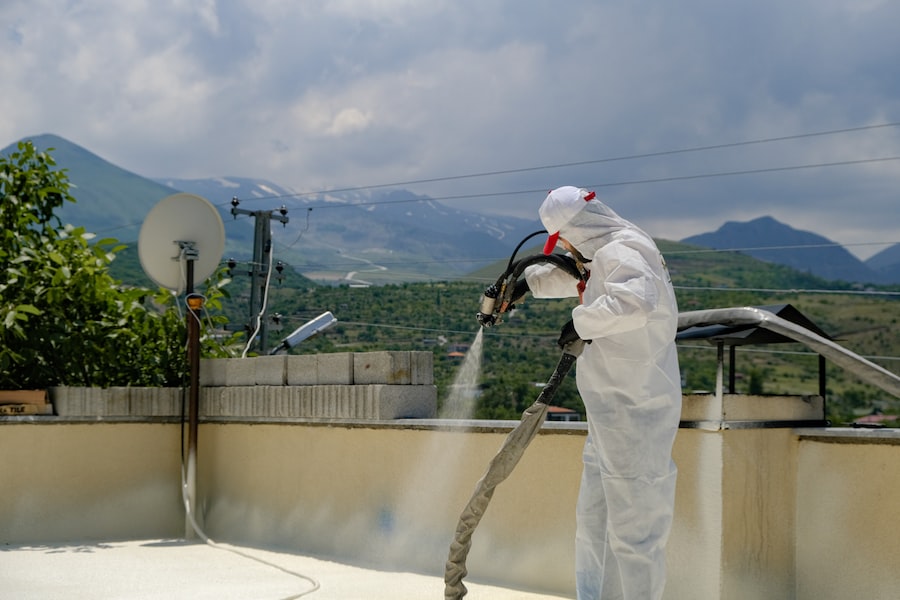
Insulating attics and roofs is crucial for maintaining a comfortable indoor temperature and reducing energy consumption. Heat rises, so without proper insulation, a significant amount of heat can be lost through the attic and roof. This can result in higher energy bills and an uncomfortable living environment.
When insulating attics and roofs, it is important to choose eco-friendly insulation materials that are effective at preventing heat transfer. Some recommended materials include cellulose insulation, sheep’s wool insulation, and recycled denim insulation.
Cellulose insulation is made from recycled paper products and treated with non-toxic chemicals to make it fire-resistant. It is an excellent choice for attics and roofs as it can be blown into hard-to-reach areas and provides excellent thermal resistance.
Sheep’s wool insulation is a natural and renewable material that is effective at insulating. It is breathable, moisture-resistant, and has excellent thermal properties. Sheep’s wool insulation is also resistant to pests and mold, making it a durable and long-lasting option.
Recycled denim insulation is made from old jeans and is an excellent choice for those looking for a sustainable option. It is non-toxic, easy to install, and provides excellent thermal resistance. Recycled denim insulation is also resistant to pests and mold.
When installing insulation in attics and roofs, it is important to follow proper installation techniques. This includes sealing any air leaks, ensuring proper ventilation, and using the correct amount of insulation. If you are unsure or if the project is complex, it is best to hire a professional to ensure a proper installation.
Green Insulation Techniques for Walls and Floors
Insulating walls and floors is essential for maintaining a comfortable indoor temperature and reducing energy consumption. Walls and floors are often overlooked when it comes to insulation, but they can be significant sources of heat loss or gain.
When insulating walls and floors, it is important to choose eco-friendly insulation materials that are effective at preventing heat transfer. Some recommended materials include cellulose insulation, sheep’s wool insulation, and recycled denim insulation.
Cellulose insulation is an excellent choice for walls as it can be blown into cavities and provides excellent thermal resistance. It can also be used in floors by installing it between the floor joists.
Sheep’s wool insulation is a natural and renewable material that is effective at insulating walls and floors. It can be installed in batts or rolls and provides excellent thermal properties.
Recycled denim insulation is another sustainable option for insulating walls and floors. It can be installed in batts or rolls and provides excellent thermal resistance. Recycled denim insulation is also resistant to pests and mold.
When installing insulation in walls and floors, it is important to follow proper installation techniques. This includes sealing any air leaks, ensuring proper ventilation, and using the correct amount of insulation. If you are unsure or if the project is complex, it is best to hire a professional to ensure a proper installation.
Maintaining and Upgrading Your Home’s Insulation
Maintaining and upgrading your home’s insulation is important for ensuring its effectiveness and longevity. Over time, insulation can settle, become damaged, or lose its effectiveness. It is important to regularly inspect your insulation and make any necessary repairs or upgrades.
One of the main signs that your insulation needs maintenance or upgrading is increased energy bills. If you notice a significant increase in your heating or cooling costs, it may be a sign that your insulation is not performing as it should. Other signs include drafts, uneven temperatures throughout the home, and moisture or mold issues.
Maintaining your insulation involves regular inspections and repairs. Inspect your insulation for any signs of damage such as tears, gaps, or compression. Repair any damaged areas by adding more insulation or sealing any air leaks. It is also important to ensure proper ventilation to prevent moisture buildup and mold growth.
Upgrading your insulation may be necessary if it is old or no longer effective. This can involve adding more insulation to existing areas or replacing the insulation altogether. Upgrading to eco-friendly insulation materials can also improve energy efficiency and indoor air quality.
When maintaining or upgrading your home’s insulation, it is important to follow proper safety precautions. Wear protective clothing, gloves, and a mask when working with insulation materials. If you are unsure or if the project is complex, it is best to hire a professional to ensure a proper maintenance or upgrade.
Green Insulation and Energy Efficiency: How They Work Together
Green insulation and energy efficiency go hand in hand. Green insulation helps improve energy efficiency by reducing heat loss or gain, which in turn reduces the need for heating and cooling. This results in lower energy consumption and lower utility bills.
By properly insulating your home, you can prevent heat loss in the winter and heat gain in the summer. This means that your heating and cooling systems will not have to work as hard to maintain a comfortable temperature. This not only saves money but also reduces reliance on fossil fuels and decreases greenhouse gas emissions.
In addition to reducing energy consumption, green insulation also improves indoor air quality. Traditional insulation materials often contain harmful chemicals that can be released into the air, leading to respiratory problems and allergies. Eco-friendly insulation materials, on the other hand, are non-toxic and do not release any harmful substances. This ensures that the air inside your home is clean and healthy to breathe.
To further improve energy efficiency, it is recommended to combine green insulation with energy-efficient appliances and practices. This includes using energy-efficient light bulbs, appliances, and HVAC systems. By combining green insulation with energy-efficient practices, you can maximize energy savings and reduce your carbon footprint even further.
The Future of Green Insulation Techniques and Sustainable Homes
The future of green insulation techniques and sustainable homes looks promising. As more people become aware of the importance of sustainability, there is a growing demand for eco-friendly insulation materials and techniques.
One of the trends in green insulation techniques is the use of recycled materials. Recycled denim insulation, for example, is made from old jeans and is an excellent choice for those looking for a sustainable option. Other recycled materials such as newspaper and cardboard are also being used as insulation.
Another trend is the development of new insulation materials that are even more sustainable and effective. Researchers are exploring materials such as aerogel, which is made from silica nanoparticles and has excellent thermal properties. Other materials being studied include hempcrete, which is made from hemp fibers and lime, and mycelium insulation, which is made from the root structure of mushrooms.
Sustainable homes are also becoming more popular. These homes are designed to be energy-efficient, environmentally friendly, and healthy to live in. They often incorporate green insulation techniques, energy-efficient appliances, renewable energy sources, and water-saving features. Sustainable homes not only reduce the environmental impact but also provide a comfortable and healthy living environment.
In conclusion, green insulation techniques are an important aspect of sustainable living. By using eco-friendly insulation materials and techniques, you can improve energy efficiency, indoor air quality, and reduce your carbon footprint. It is important to choose the right insulation material for your home based on factors such as R-value, environmental impact, cost, and installation process. Whether you choose to install the insulation yourself or hire a professional, proper installation is crucial for ensuring its effectiveness. Regular maintenance and upgrading of your home’s insulation are also important for maintaining its effectiveness and longevity. By combining green insulation with energy-efficient practices, you can maximize energy savings and reduce your carbon footprint even further. The future of green insulation techniques and sustainable homes looks promising, with new materials and techniques being developed to further improve sustainability.
Looking for ways to make your home more energy-efficient and comfortable? Check out this article on Green Insulation Techniques for a Warmer, More Efficient Home. It provides valuable tips and insights on how to improve your home’s insulation, resulting in reduced energy consumption and lower utility bills. From choosing the right insulation materials to sealing air leaks, this article covers everything you need to know. Don’t miss out on this opportunity to create a greener and more sustainable living space. Read more: https://agutonsky.com/isolatie-een-essentiele-stap-voor-energiebesparing-in-uw-woning/
FAQs
What is green insulation?
Green insulation refers to insulation materials and techniques that are environmentally friendly and sustainable. These materials are made from renewable resources and have a low impact on the environment.
What are the benefits of green insulation?
Green insulation can help reduce energy consumption and lower utility bills. It also helps to reduce greenhouse gas emissions and improve indoor air quality. Additionally, green insulation materials are often more durable and require less maintenance than traditional insulation materials.
What are some examples of green insulation materials?
Some examples of green insulation materials include cellulose, recycled denim, wool, and cork. These materials are made from renewable resources and have a low impact on the environment.
How does green insulation improve indoor air quality?
Green insulation materials are often made from natural fibers that do not contain harmful chemicals or toxins. This means that they do not release harmful particles into the air, which can improve indoor air quality and reduce the risk of respiratory problems.
How can I install green insulation in my home?
Green insulation can be installed in a variety of ways, depending on the type of material used. Some materials, such as cellulose, can be blown into walls or attics using special equipment. Other materials, such as recycled denim, can be installed in batts or rolls like traditional insulation. It is recommended to hire a professional insulation contractor to ensure proper installation.
